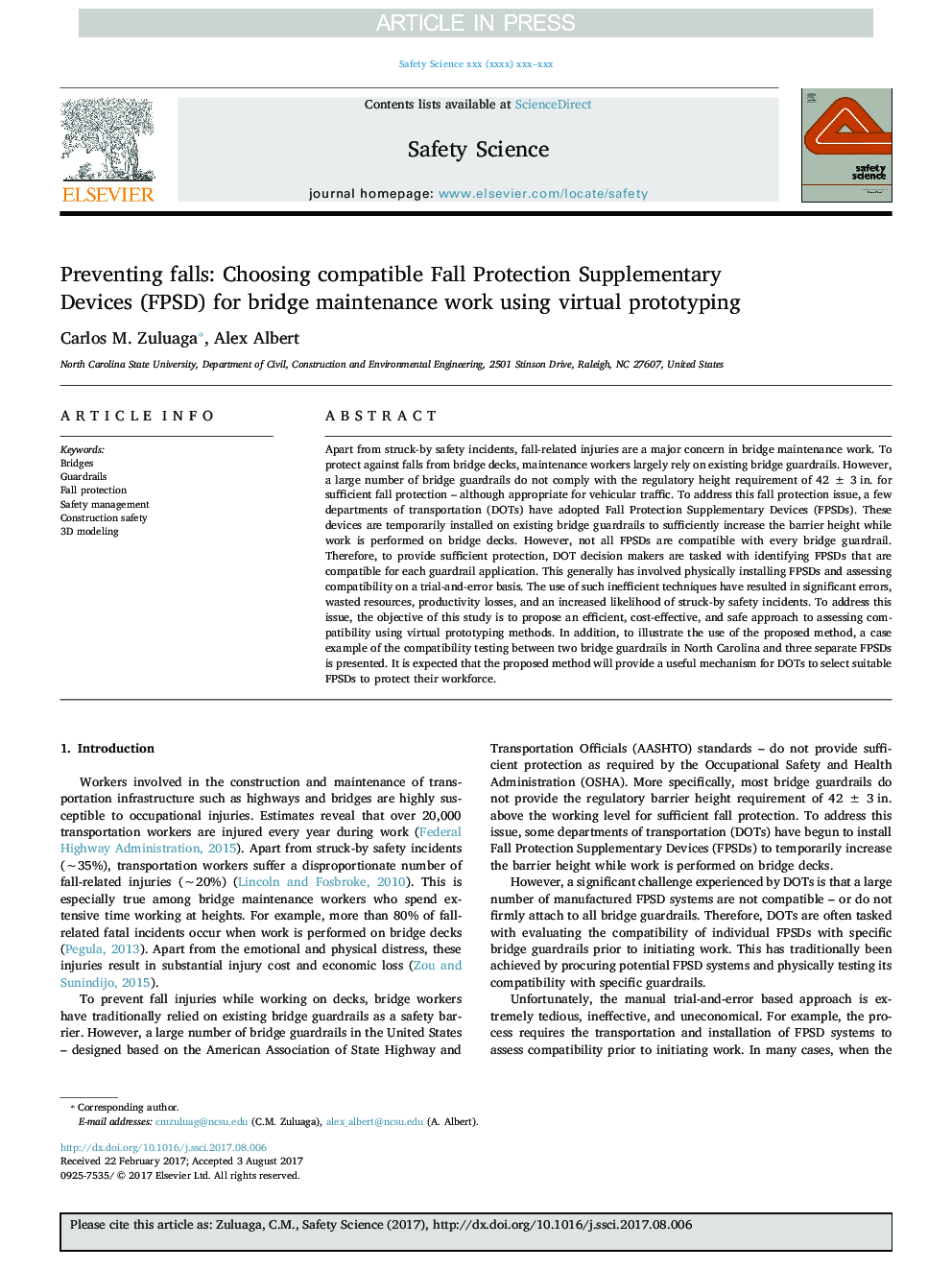| Article ID | Journal | Published Year | Pages | File Type |
|---|---|---|---|---|
| 6974796 | Safety Science | 2018 | 10 Pages |
Abstract
Apart from struck-by safety incidents, fall-related injuries are a major concern in bridge maintenance work. To protect against falls from bridge decks, maintenance workers largely rely on existing bridge guardrails. However, a large number of bridge guardrails do not comply with the regulatory height requirement of 42 ± 3 in. for sufficient fall protection - although appropriate for vehicular traffic. To address this fall protection issue, a few departments of transportation (DOTs) have adopted Fall Protection Supplementary Devices (FPSDs). These devices are temporarily installed on existing bridge guardrails to sufficiently increase the barrier height while work is performed on bridge decks. However, not all FPSDs are compatible with every bridge guardrail. Therefore, to provide sufficient protection, DOT decision makers are tasked with identifying FPSDs that are compatible for each guardrail application. This generally has involved physically installing FPSDs and assessing compatibility on a trial-and-error basis. The use of such inefficient techniques have resulted in significant errors, wasted resources, productivity losses, and an increased likelihood of struck-by safety incidents. To address this issue, the objective of this study is to propose an efficient, cost-effective, and safe approach to assessing compatibility using virtual prototyping methods. In addition, to illustrate the use of the proposed method, a case example of the compatibility testing between two bridge guardrails in North Carolina and three separate FPSDs is presented. It is expected that the proposed method will provide a useful mechanism for DOTs to select suitable FPSDs to protect their workforce.
Related Topics
Physical Sciences and Engineering
Chemical Engineering
Chemical Health and Safety
Authors
Carlos M. Zuluaga, Alex Albert,
